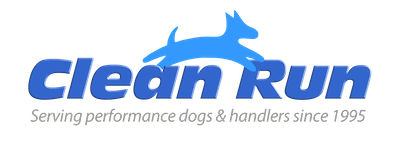Success in dog agility depends on your ability to effectively communicate with your dog. Your ability to guide your dog depends on your understanding of how to use body language and verbal commands. Your body language is the most important cue you will use in agility. Body language signals such as your motion, body positioning, and physical cues can all be used to direct your dog on course. Motion is your primary body language cue. Physical cues such as the direction your shoulders are facing and your hand signals indicate direction to your dog. Your position on the course, relative to both your dog and to the obstacles, also gives your dog directional information. Verbal commands should complement your body language; you should not rely on them as your primary cues.
READ MORE
Having spent the past months conducting seminars in several
countries, I was inspired to write an article about front-cross timing. This inspiration was due to the difficulties and confusion I observed many people are having with front crosses, and also I wanted to help people understand the reasons for the common mistakes they are seeing and making due to timing errors.
READ MORE
A handling system is simply the means of communication that you use with your dog on course. Think of it as the language you both speak. For your dog to reliably and promptly do what you ask, you both must understand what is being said.
READ MORE
A double front cross occurs when two front crosses are performed in succession, typically on the takeoff side of a jump followed by another on the landing side of the same jump. The sequence must be given thoughtful consideration when determining the most appropriate cue combination. Compared to a single front cross, a double front cross can be difficult to cue appropriately.
READ MORE
In a series of earlier articles for Clean Run, I wrote about City/Highway driving (“Highway/City” May through July 1999). Today, we more often refer to the idea of “changes of gear” on the agility field as handler focus and obstacle focus. These two concepts form the foundation for our training program at Rising Stars Dog Agility.
READ MORE
Trying to list everything that could go wrong in either training or trialing would be like trying to list all the different types of bacteria found on the face of our planet (which is something like 5 nonillion or 5 x 1030). When something goes wrong, it often happens in the blink of an eye; too quickly for most of us to react to “save” the offcourse, the missed contact, the knocked bar, or any other myriad of problems. But we can focus on things you can do before and after things go wrong, thus increasing the likelihood that more things go right, more often.
READ MORE
Let's compare the speed of your dog through a turn with your dog's straight-line speed over jumps.
READ MORE
Keeping visual contact with your dog is perhaps even more important than perfecting how you do a front cross, rear cross, or any other maneuver. After all, if you don't have your eyes on your dog, how will you know when to cue him?
READ MORE



